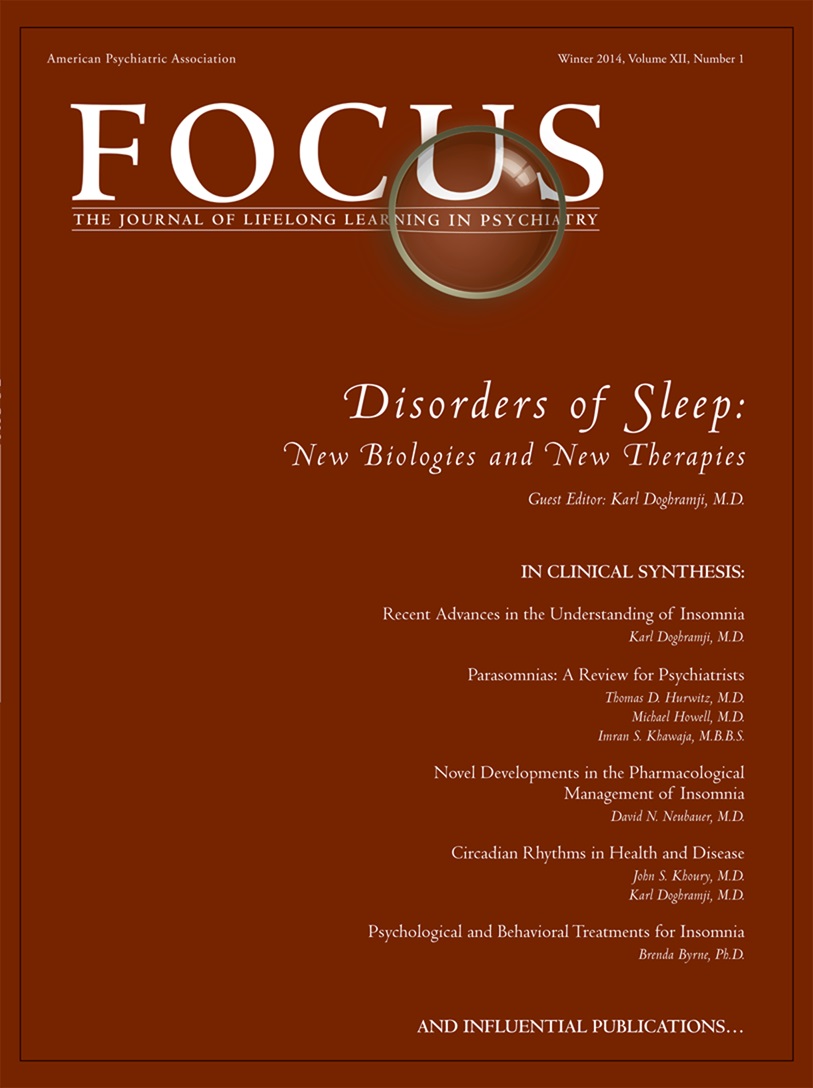Parasomnias: A Review for Psychiatrists
Abstract
The category of sleep disorders known as parasomnias includes behavioral disturbances occurring during sleep or states of mixed sleep and wakefulness. They can be minimal and confined to vocalizations or minor movements or of a magnitude that can lead to serious injury, disruption of relationships, and diagnostic ambiguity. Many can be mistakenly thought to represent manifestations of psychiatric disorders. Careful evaluation and therapy can prevent inappropriate psychiatric diagnosis, avoid ineffective treatment, and ameliorate the sleep disorders. Herein, many parasomnias will be brought to the attention of practicing psychiatrists who can learn to recognize enough of the most important clinical features to ensure appropriate consultation with a sleep medicine specialist.



